Department of Physics, National Central University
Condensed Matter Physics Laboratory

Local anodic oxidation (LAO)
Nano-lithography by local anodic oxidation (LAO) has successfully been demonstrated on a variety of materials. The basic elements of LAO includes a conductive probe, wettable substrate surafce, humid enviroment, and tunable applied bias circuit. The LAO stepup is depicted in the schematic plot (Fig.1).
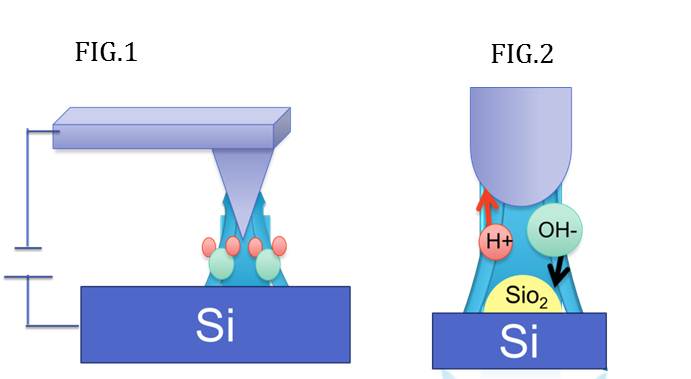
Applied external bias difference between probe and surafce supplies sufficient energy to dissociate water molecular in the water bridge between probe and surface of interest. Under negative bias on probe, the chemical reaction reads
The most widely accepted models for LAO includes Cabrera-Mott model, empirical power-of-time model, and space-charge limited model.
Cabrera-Mott model
Cabrera–Mott model is valid for thin oxide films. The first assumption of the Cabrera–Mott model is that electrons can pass freely from the metal, through the oxide surface, and to react surface atom. Oxide growth under high electric field is described by ion migration .The below figure shows the schematic picture of Cabrera–Mott model.
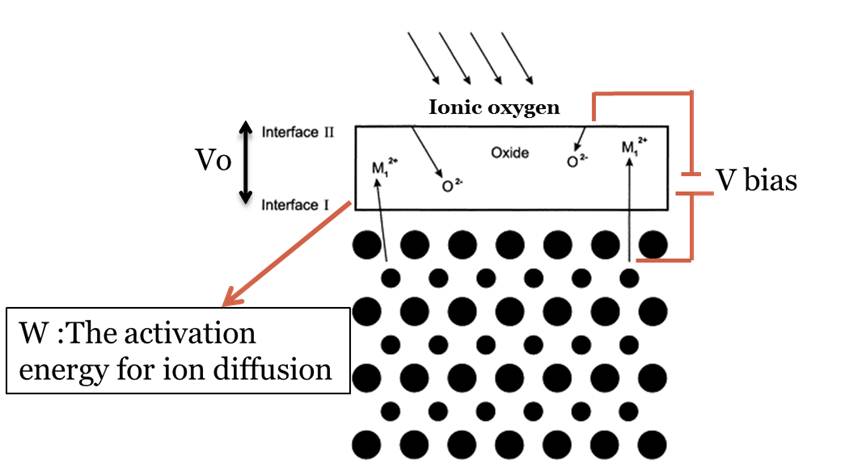
The kinetic of growth could be written by:

This model is valid only when h << h1(few nanometer) . When h is small, the oxide rate is vary large. Where
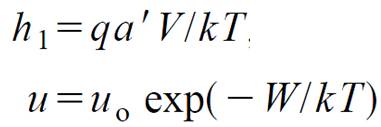
We can get
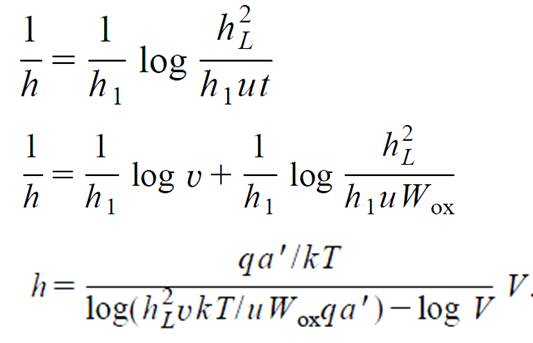
hL where oxidation is no longer assisted by the electric field.
a’ is half the distance between two interstitial sites.
Empirical power-of-time model
This model is used to describe how tip’s oxidation writing speed effects the height of oxide.
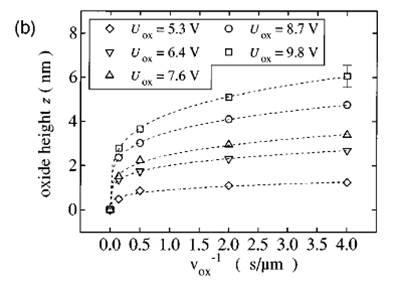
The silicon oxide growth function:
Uth is the threshold voltage for growing oxide. vo=1 um/s ,αo=0.78 nm/V,γ=0.23±0.02 for this case.Reference : Appl. Phys. Lett. 67, 3144 (1995); doi: 10.1063/1.114861
Graphene oxide(GO)
In our experiment condition we use the silicon buffer oxide covered with the CVD graphene as the oxidation template. Conductive tip apllied with negative voltage around 16~-5 V to oxidize the graphene sheet under contact mode. The GO experiment set up graph as below.
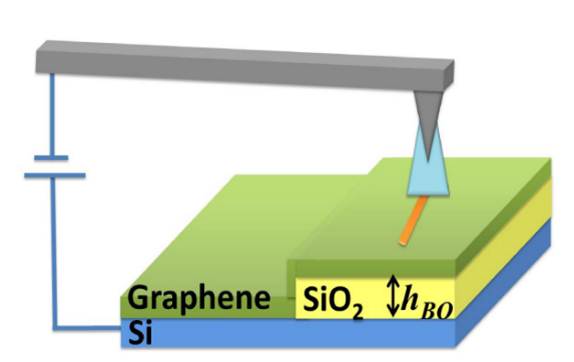
It can be seen in the AFM topography graph. Under stong electrical field, the accelerated OH- not only react with the surface graphene but also the subsurface SiOx/Si template, and results in protrusion much higher than the carbon-oxygen physical stacking. The writing speed which from 0.1-5 um/s has strong effect on the resultant protrusion height. The figures below is shown as example.
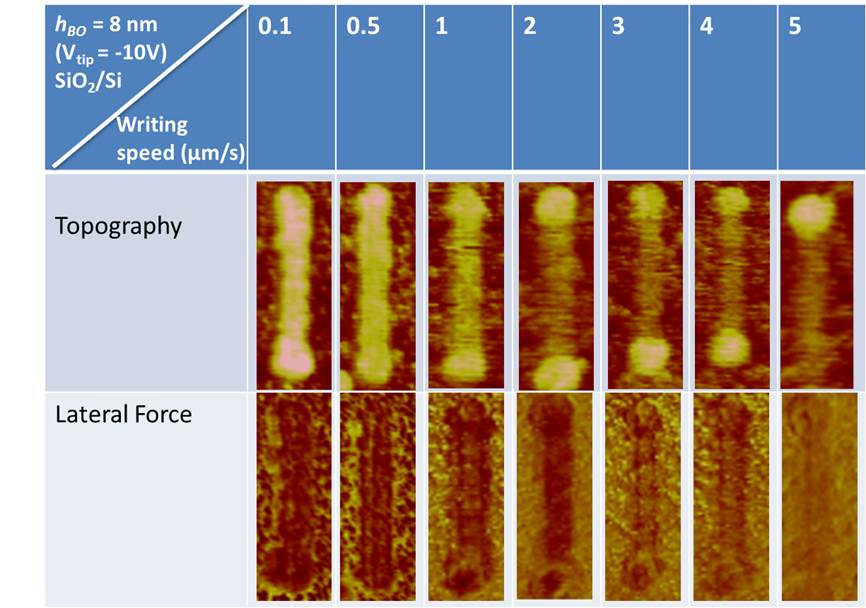
© 中央大學凝態物理實驗室 Condensed Matter Physics Laboratory, National Central University
320 桃園縣中壢市中大路300號 No.300, Jhongda Rd., Jhongli City, Taoyuan County 32001, Taiwan(R.O.C.)
Tel: 886-3-4227151ext.65399 | Email: wywoon@phy.ncu.edu.tw